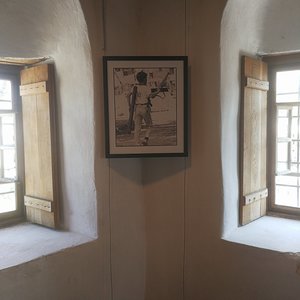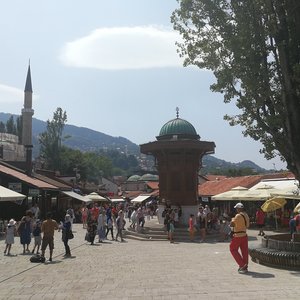Mostar and Sarajevo
While the effects of war are still very present in Bosnia and Herzegovina, we also found a country filled with resilience and continued hope for the future.
Mostar
There are only two daily buses that leave Kotor for Mostar, Bosnia and Herzegovina, and we boarded the earliest one leaving at 11am. This bus route is only seasonal, thus we were lucky to be able to take it. The alternative would have been taking a bus into Dubrovnik, Croatia and then from there another bus for Mostar. This trip would have included multiple boarder crossings and thus isn’t ideal. That being said, our bus essentially took a tour in the form of a circle around Montenegro before entering Bosnia–making a roughly 4 hour trip turn into a 10 hour trip. As soon as we entered Bosnia it became clear that the country is gorgeous–beautiful mountain scenery and idyllic villages. I think our driver was less than thrilled though as he had to make numerous stops to honk at cows who clearly were not in a hurry to vacate the road.
We arrived in Mostar as the sun was going down and decided to walk the 2 miles to our hostel after the taxi driver tried to over charge us by more than double. During our walk it became clear that the damages of the war were still present. We passed by numerous destroyed buildings and those that are still in use often come riddled with bullet holes. While passing a cemetery it’s hard not to notice that a large amount of the dates listed of death are 1993–the year the Croat-Bosniak war became increasingly bloody and ethnically divided.
We only had one night in Mostar, so the next morning we bought a bus ticket for the afternoon to Sarajevo and stored our luggage so that we could explore the city. The highlight of Mostar is Stari Most (Old Bridge). Originally built in the 16th century, the arched bridge is a national symbol and one that the people of Mostar take tremendous pride in. Thus, once it was purposefully destroyed by the Croats during the war, this was an emotional hit for the city. Reconstruction of the bridge was one of the top priorities in the rebuilding/restoration effort following the war, and it was officially reopened in 2004. One of the main highlights of the bridge is watching the divers jump from it.
Sarajevo
From Mostar it’s about a 2 hour bus ride to Sarajevo. Throughout the drive and upon entering Sarajevo, the lasting effects of the war are still noticeable, much like Mostar, shelled out buildings and numerous bullet holes all over. While we typically avoid taking tours, primarily because of the cost, we decided it would be well worth it to take a tour specific to the Siege of Sarajevo. Our guide, Almedin, a Bosniak (Bosnian Muslim) was born during the siege. We appreciated that while he provided us with facts, he also shared his and his families personal experiences during the war. We went to numerous sights throughout the city, including vistas that provided beautiful panoramas, but also gave us a first hand look at how the siege looked and where the people were located within the city. We also had the opportunity to visit the Sarajevo Tunnel–used to link the two Bosnian held territories that had been cut off by the Serb forces. Almedin also discussed current events, including showing us a camp of veterans protesting for higher pensions and health coverage. He also shared his fears with us that the “war is only on pause” citing numerous grievances that are still held, growing nationalism from different factions, and the segregation of students in schools, but there is hope.































